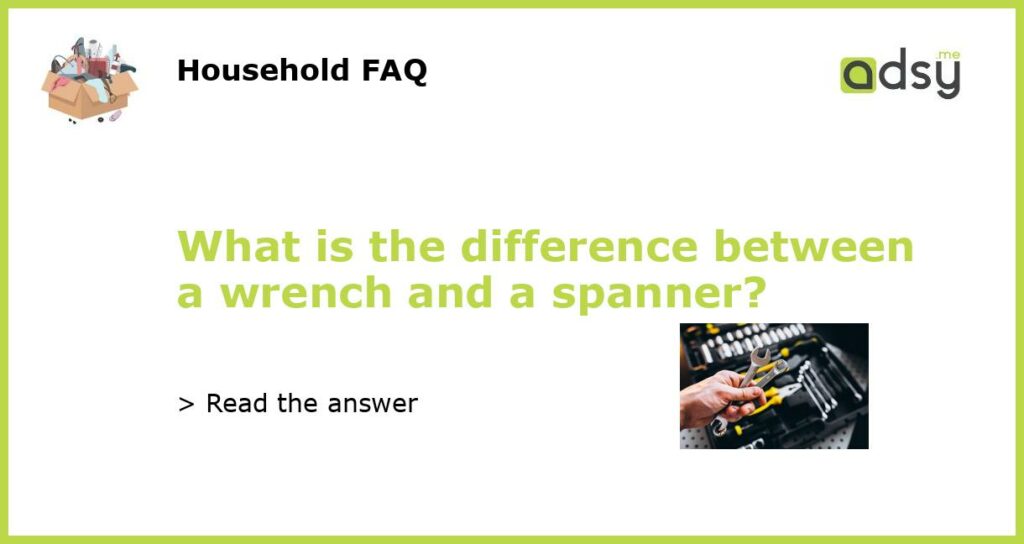What is a wrench?
A wrench is a hand tool used to provide grip and mechanical advantage in applying torque to turn objects, usually rotary fasteners such as nuts and bolts. It consists of a handle and a jaw. The jaw may be fixed or adjustable, allowing it to fit a range of fasteners of different sizes. Wrenches come in different shapes and sizes, designed for various applications.
What is a spanner?
A spanner, also known as a wrench in some parts of the world, is a tool used for tightening or loosening nuts, bolts, and other fasteners. Spanners are typically defined by the shape of their jaw or wrench opening, which is usually fixed and designed to fit a specific size or type of fastener. They can be used manually or with the help of a mechanical or electrical force.
The key difference between a wrench and a spanner
While wrenches and spanners are often used interchangeably, the key difference lies in the terminology’s regional usage. In the United States and Canada, the term “wrench” is more commonly used, while in the United Kingdom and other parts of the world, “spanner” is the preferred term. Functionally, however, they are the same tool.
Types of wrenches and spanners
There are various types of wrenches and spanners available, each designed for specific applications:
- Adjustable wrench/spanner: This type has a jaw that can be adjusted to fit different sizes of nuts and bolts. It is versatile but may not provide as secure of a grip as a fixed size wrench.
- Open-ended wrench/spanner: This type has a U-shaped opening at both ends, allowing it to fit over the fastener from either side. It provides better grip and is suitable for tight spaces.
- Box-end wrench/spanner: This type has a closed-end that fully encloses the fastener. It provides better grip and reduces the likelihood of rounding off the fastener’s corners.
- Socket wrench/spanner: This type uses interchangeable sockets that fit over the fastener. It allows for quick switching between different sizes and is commonly used with a ratchet for easier operation.
- Allen wrench/spanner: Also known as a hex key, it has a hexagonal shape and is used to drive screws or bolts with hexagonal sockets.
How to choose between a wrench and a spanner?
When choosing between a wrench and a spanner, consider the following factors:
- Size of the fastener: Ensure that the wrench or spanner you choose is the right size for the fastener you are working with. Using an incorrect size can damage both the tool and the fastener.
- Type of fastener: Different fasteners may require different types of wrenches or spanners. For example, a nut may require an open-ended wrench, while a bolt may require a socket wrench.
- Accessibility: Consider the space in which you will be working. If there is limited space, a spanner with a slimmer profile may be more suitable.
- Grip and torque requirements: Depending on the specific application, you may need a wrench or spanner that provides a secure grip and allows for applying sufficient torque.
- Personal preference: Some individuals may have personal preferences for using one tool over the other based on past experience or familiarity.






